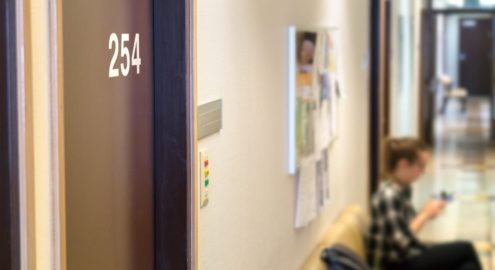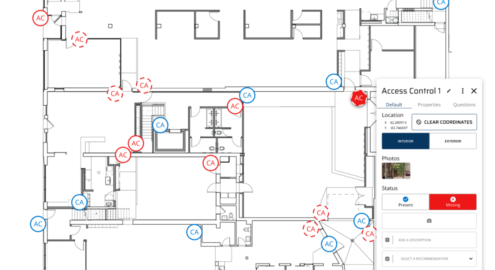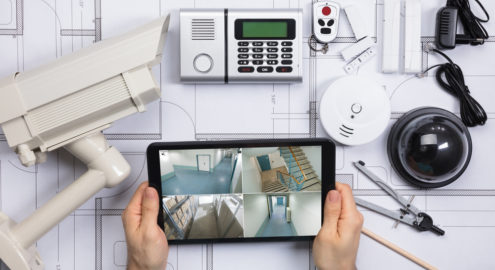Vulnerability
Top 5 Security Threats Hiding in Plain Sight

I was at a research facility that does animal testing. They had materials that could be used to make a dirty bomb, and they had multiple chemicals that could be used to make and manufacture an explosive. As I walked through the facility I noticed they had duct tape on a door latch. When I asked about it, they said people go in and out all the time, so they taped it. “Is it too hard for them to get a key?” I asked.
“Well, it belongs to another department, it’s not our responsibility,” they said. “There’s nothing in there of value.”
“You don’t think someone could place an item like a bomb in here?” I asked.
“Oh, no! That would never happen here!”
“But you’re a research facility with the components to make a dirty bomb in the basement.”
“Huh. Yeah, I guess that is a possibility.”
You’d be surprised how many little things around your premises are actually major security threats. They hide in plain sight and often go unnoticed—or, worse yet, brushed off.
Every time I do an assessment, there are several issues that are generally there. They get disregarded as trivial infractions, but they open the facility to real dangers. Here are the top five security threats that hide in plain sight. Are any of them lurking at your workplace?
Handpicked related content: Don’t Stop at the Door—Keep Employees Safe Outside of Work
1) Piggybacking/tailgating
If you have an access control system and you swipe your badge, it’s natural to hold the door open for the person behind you. You probably don’t even think about it. But it’s a huge problem.
The access control system is there for a reason. People often think that it’s not a big deal, because they know this person works here. But would you know if that person was just terminated or laid off? They may have had access yesterday, that doesn’t mean they have access today.
Everybody needs to swipe. Everybody. The person behind you should be considerate enough to understand that they need to swipe. Institute a culture change at work and redefine courtesy. Being polite isn’t you holding the door open for me, it’s me letting the door close after you and swiping my card.
2) Computer Passwords
I can’t tell you how many times I see passwords taped onto computer monitors or under keyboards. When I do security assessments, there are three places I always look: on the monitor, under the keyboard and in the top drawer. I find passwords there all the time.
People trust that no one will rummage around their desk looking for a password, or they think it doesn’t matter, because everyone in the department has the same access. But your custodial service doesn’t have that access. People from other departments may not have that access. A coworker’s spouse doesn’t have access.
It’s incredibly easy for the wrong person to be digging around your desk unnoticed. Never leave your computer password around your workspace.
3) Door Propping
Propping doors open is a huge issue just about everywhere I do an assessment. I’m always surprised by this and I can’t believe it still happens.
A propped door isn’t only convenient for the person who propped it—it’s convenient for anyone else in the vicinity. An open door is an invitation to enter, and anyone walking by now has complete access to your facility.
Locked doors may be an inconvenience, but unlawful entry is an even bigger one.
4) Broken Cameras
Surveillance cameras can be very useful in apprehending a criminal, but not if they don’t work. Some facilities don’t worry about broken surveillance cameras, because they assume that a broken camera can still deter criminals. But the truth is that a broken camera actually increases your liability. If a victim relies on a camera to capture an attacker and your camera doesn’t work, you could be looking at an expensive lawsuit, damaged reputation and employee disputes.
5) Burned-out Lights
Some research indicates that dark areas are ripe for violent crimes to occur. Often it’s not in the building but in a dark parking lot outside the building where assaults, car thefts and robberies happen. It shocks me when organizations don’t have their perimeters lit up.
Your parking lot, outdoor walkways and landscaped areas should be brilliantly lit. As a rule of thumb, if your parking lot looks like a car dealer’s lot, you’re doing well. It should never be dark. You’ll never see a darkened car lot—they replace dead bulbs within a day, and you should, too.
BONUS: Background Checks
You’re probably doing background checks when you hire new employees. But many companies don’t think about doing checks on contractors as well. Contractors have just as much access to your facilities as your employees do.
More importantly, don’t consider your background checks as a one-and-done activity. Just because your new hire hasn’t committed a crime before you hired them, that doesn’t mean they won’t commit a crime afterwards. Repeat background checks are becoming more common among employers, and it’s becoming a standard best practice for security. Do background checks every two to five years, not just initially.
Make Your Building More Secure
While “trivial infractions” may seem like nothing to worry about, it’s important to take every issue seriously. Security efforts are there to protect your employees, not to inconvenience them.
What security threats are hiding in plain sight at your workplace? Do a quick survey of the building this month. Take notes, and devise a corrective action plan.
Want more help improving your building security? Get more industry-leading content delivered to your inbox—subscribe to the blog.




